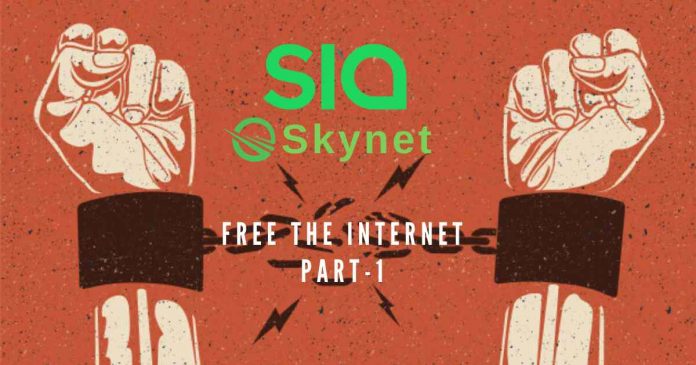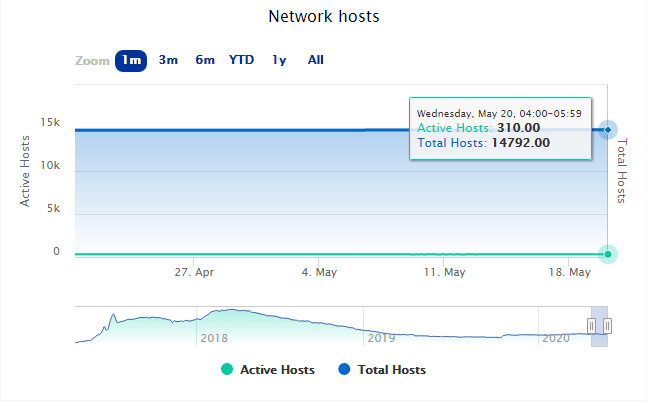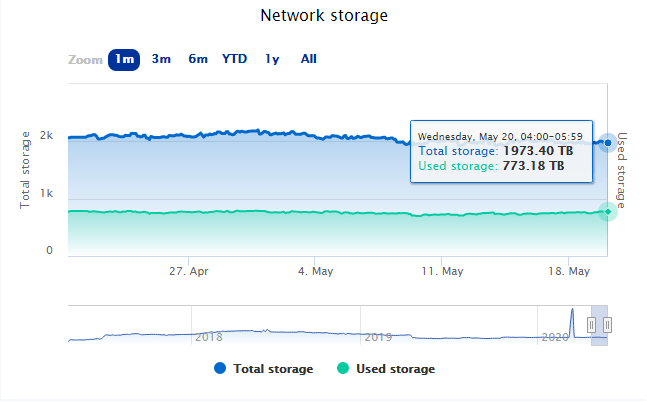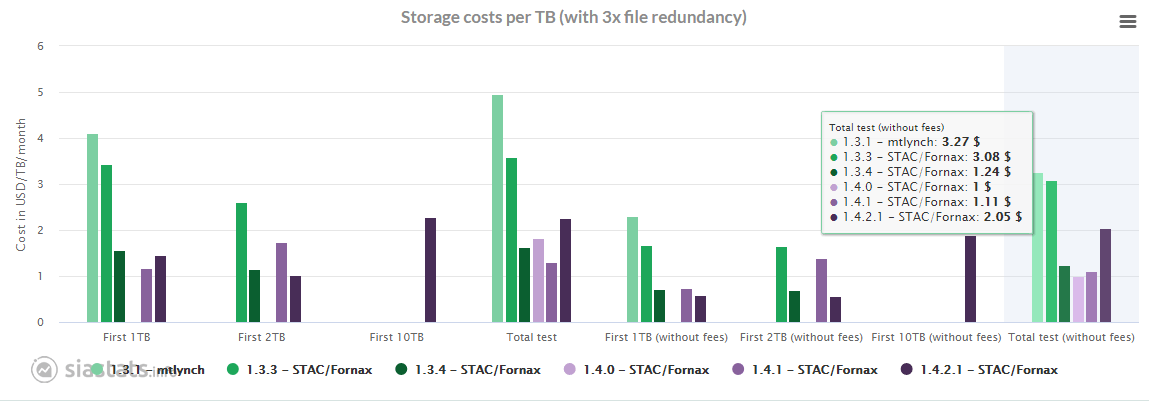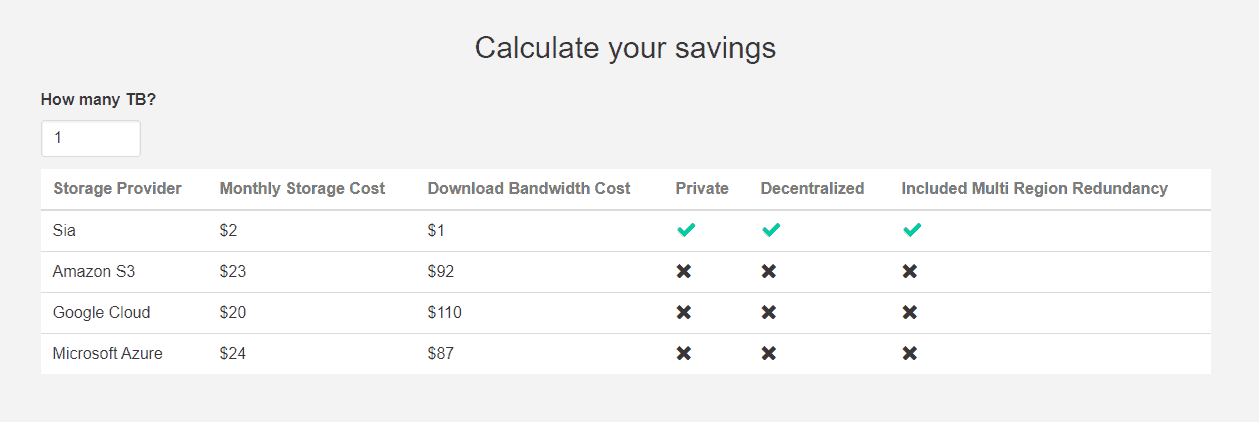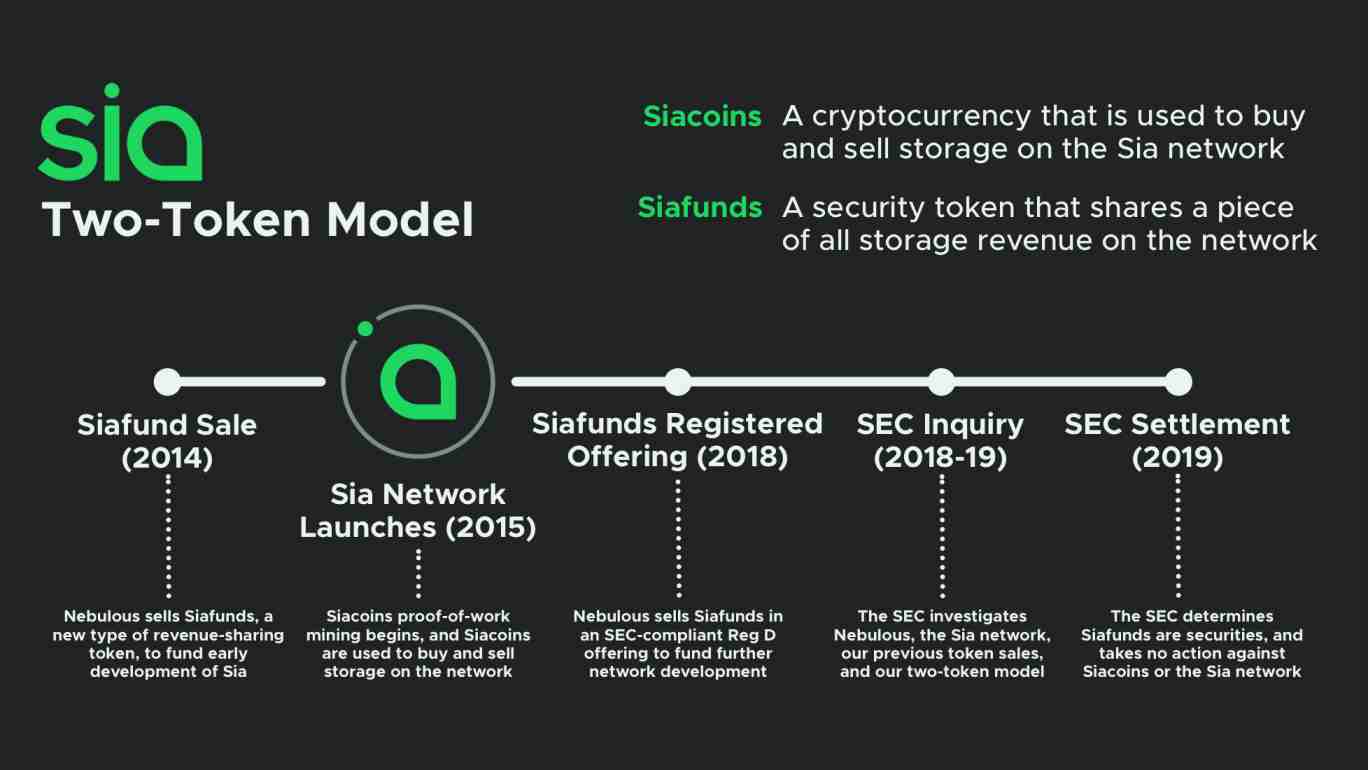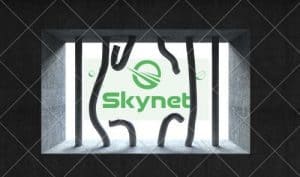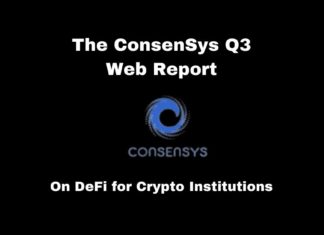Founded in 2015, Sia attempted to penetrate the ripe enterprise cloud storage industry. Led by David Vorick and Luke Champine, Sia was up against cloud storage behemoths like Amazon S3 (Amazon), Google Cloud Storage (Google), Microsoft Azure (Microsoft), Dropbox for business (Dropbox).
But Sia Network had a value proposition that both storage seekers and providers simply could not resist. Sia founders proposed cloud storage set up that supported:
- Decentralization
- Trustless peer-to-peer (P2P) sharing
- Highly secure data
- Reducing cost
What is wrong with AWS, Azure, and Google cloud?
If you recall in March 2017, internet-based companies like Slack, Trello, Medium, and Quora suffered a 4-hour long cloud outage. However, the event that resulted in losses worth millions was triggered by an accidental mistyping of command by an AWS engineer. What?
Yeah, you read it right.
Due to this minuscule human error, Amazon S3’s largest data center cluster, located in Northern Virginia, melted down. And it wreaked havoc all across the internet.
It doesn’t end at AWS. As a matter of fact, equally competitive giants with highly sophisticated centralized databases have also failed invariably to keep the hacks, data privacy issues, and data mismanagement crises at bay.
Such incidents create the need for Sia that is essentially Now, a network that allows users to store their data in the cloud without losing control.
What is Sia? How does it look like today?
Today, Sia is a decentralized cloud storage platform powered by blockchain. Instead of renting storage from centralized database providers, Sia network connects peers seeking storage with the ones having underutilized data storage. With the decentralized approach, Sia ensures the security of data at a very low cost.
In simple words, if you have a hard disk with some free space, you can become a renter on Sia Network and earn Siacoins. Remember Siacoin is not the only cryptocurrency on the platform, there is one more and we will discuss that in later sections.
Recently, Sia community excitement skyrocketed with the launch of decentralized CDN (content delivery network) SkyNet. This decentralized CDN and file sharing platform promises to serve as the foundation for free internet. Undoubtedly, SkyNet has taken internet users and developers by storm.
But before we try our hands with SkyNet, it is important to understand where Sia stands right now and how it works.
Sia Network Stats (Dated: 20th May 2020, 10:30 am UTC)
| Parameter | Value |
| Total Hosts | 14,792 ( Fig. 1) |
| Active Hosts | 310 ( Fig. 1) |
| Total Storage | 1973.40 TB ( Fig. 2) |
| Used Storage | 773.18 TB( Fig. 2) |
| Network Price | 345.61 SC/TB/Mo( Fig.3) |
| Storage Price | $2 for 1 TB of storage per month ( Fig. 4) |
Total and active Sia Network hosts Fig. 1
Source: siahub.info
Total and used Sia Network storage Fig. 2
Source: siahub.info
Sia Network price Fig. 3
Source: siahub.info
Sia Network storage cost Fig. 4
Source: Siastats.info
Wow! That was a truckload of statistics.
But the crux is that the storage price over Sia fluctuates over two main reasons.
1) Due to changes in the software’s efficiency
2) Due to changes in the market price of Siacoin
However, there is no debate here that Sia Network is way cheaper than Amazon S3. That’s because to store 1 TB of data, Sia Network charges you $2 while Amazon S3 will charge you $23. And that too at the cost of losing total control over your data.
The question remains how is Sia able to offer higher network uptime and data redundancy without charging hefty fees? The answer lies in Sia’s network design.
How Sia works?
As a Sia platform user, when you upload a file on Sia, it segments your file into many pieces. All these file segments are then encrypted and shipped to different hosts using smart contracts. Moreover, the data is encrypted by the Twofish algorithm and is stored with the redundancy algorithm Reed-Solomon.
This resolves the single point of failure issue that we discussed at the very beginning of this article. Moreover, payment for the distributed storage takes place in Siacoins for leveraging the extra storage space.
Source: Digital.hbs.edu
Now, Sia’s main file hosting service is intended to be private cloud storage. On the other hand, its recent SkyNet service development was as a public web hosting platform. Just like your YouTube but a decentralized one. We will talk in detail about SkyNet a little ahead.
Inherently secure
Remember, we talked about user files being segmented and spread across multiple hosts. This design feature happens to resolve the hacking issue too.
Firstly, the file segments are encrypted, so if anyone tries to access it, the decryption is going to be an uphill task.
Secondly, the hacker would be able to lay hands only on a part of the entire file or dataset that will be of no use. From a hacker’s point of view, why take so much pain for a useless fragment of data.
Speed optimization
While the AWS S3 advertisement promises 2 Gbps (gigabit per second) upload speed, users complain about speed topping out at 2.3 Mbps. Not that Amazon is making false claims, this issue crops up because of the way the centralized storages operate. In fact, the geographical location of the user and the data server matters a lot.
However, in the case of Sia, the data is spread across geographically spread out locations making content delivery much faster than traditional networks. And speed is the main advantage of its new CDN platform SkyNet. According to Vorick, time to first byte (TTFB) for a SkyNet download is typically under half a second. And the throughput is approximately 1 Gbps.
Save the dollars
One thing that the centralized storage system is unable to achieve is to cut down the costs of their services. As we mentioned earlier, a Sia user pays $2 for 1 TB/ per month storage, whereas, for the same storage, a user of AWS S3 has to fork out $23. And there is a reason for it.
Sia is basically charging the user for the raw storage. But for the same storage, AWS has costs associated like the high-grade maintenance of the set-up, lawyers, and marketers, and of course, users end up paying for the brand value too.
In a decentralized set-up like Sia, storage providers take care of their infrastructure by themselves. Thus the infrastructure adds no overhead to the storage price the user pays for.
Source: Steemit.com
How P2P storage operates in the Sia ecosystem?
The P2P set up in Sia comprises the renters and the hosts. As the name suggests, the hosts are the ones who offer their storage to the networks and the renters are the one who pays in Siacoins for the storage they use. It is the file contract (the smart contracts) that defines the rules of engagement between renters and the hosts.
For every engagement, a renter has to trigger a file contract with a pre-paid amount of Siacoins. According to the requirements of the renter, the 50 top hosts are matched and they lock some of the Siacoins as collateral. Once there is confirmation of engagement, a file contract is signed and submitted to the blockchain. As long the renter maintains the funds in the allowance, he is free to upload and download his files.
The two token tokenomics
At the beginning of this article, we shared that the Sia ecosystem is supported by two tokens. While we have been liberally talking about Siacoin, we have hardly touched the other token Siafund. That’s because Siacoin is the utility token of the Sia Network.
Siafund is a revenue-generating token introduced to finance Sia’s development. This ensures that the funding for technology development of Sia is not dependent upon external investors. Apart from that, Sia has raised total funding of $7.4 million and has earned a revenue of $2 million.
Source: blog.sia.tech
Whenever a file contract is completed between a renter and a host, the Sia node calculates the exact amount to be paid to the host and the renter. In all 3.9% of the total money of the contract is distributed amongst the 10,000 Siafunds in the blockchain.
To date, Sia has processed over 1 million file contracts.
Finally “The Sia SkyNet”
Without grasping the essence of the Sia Network it would have been a challenge to understand why SkyNet is better than the traditional CDNs and file-sharing systems.
As the Sia team calls it, SkyNet is the permanent home for data and applications. And that’s because a file on SkyNet can exist online as long as at least one peer keeps the file “pinned”. As it uses a P2P decentralized blockchain setup, it lays a fair foundation for deploying files and applications.
As a public web hosting platform, anyone can upload a file on SkyNet. All thanks to Sia that enables high-speed, low-cost content distribution and file sharing on SkyNet. In terms of storage pricing SkyNet claims to be 90% cheaper than its competitors. And most importantly, it lays the foundation for what everyone calls the “free internet”. So basically with SkyNet, you don’t play by the rules of Google, Facebook, Amazon, or YouTube. You own your data, your content and you decide whether it stays or leaves.
With this article, I tried my best to help readers understand what the foundation of SkyNet looks like and what renders it the capability to lay the framework of free internet. The next and final article in this 2-part series will shed light on every aspect of SkyNet in detail.
—
Disclaimer
The information discussed by Altcoin Buzz is not financial advice. This is for educational and informational purposes only. Any information or strategies are thoughts and opinions relevant to accepted levels of risk tolerance of the writer/reviewers and their risk tolerance may be different than yours. We are not responsible for any losses that you may incur as a result of any investments directly or indirectly related to the information provided.
Do your own due diligence and rating before making any investments and consult your financial advisor. The researched information presented we believe to be correct and accurate however there is no guarantee or warranty as to the accuracy, timeliness, completeness. Bitcoin and other cryptocurrencies are high-risk investments so please do your due diligence. Copyright Altcoin Buzz Pte Ltd. All rights reserved.

























